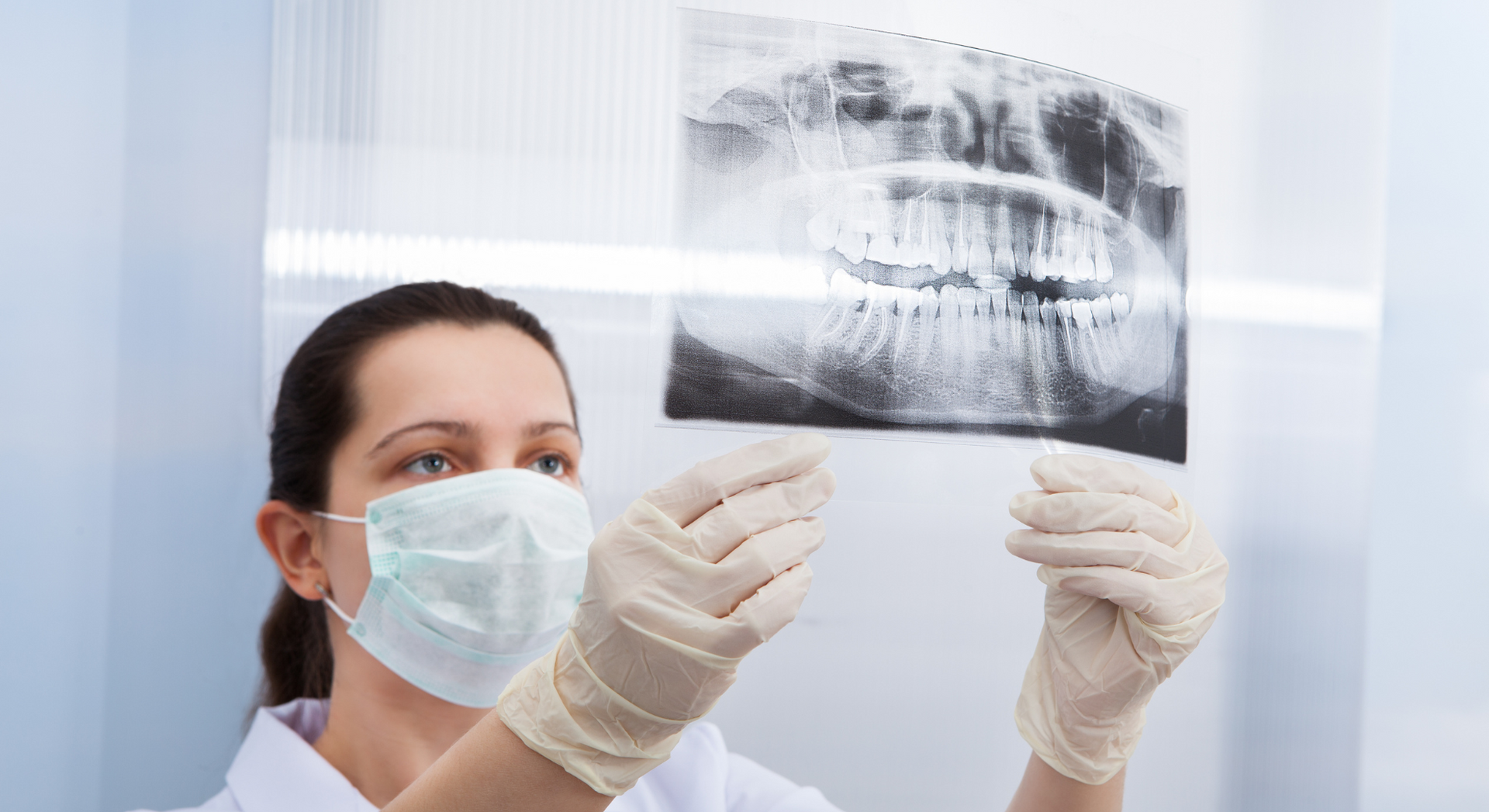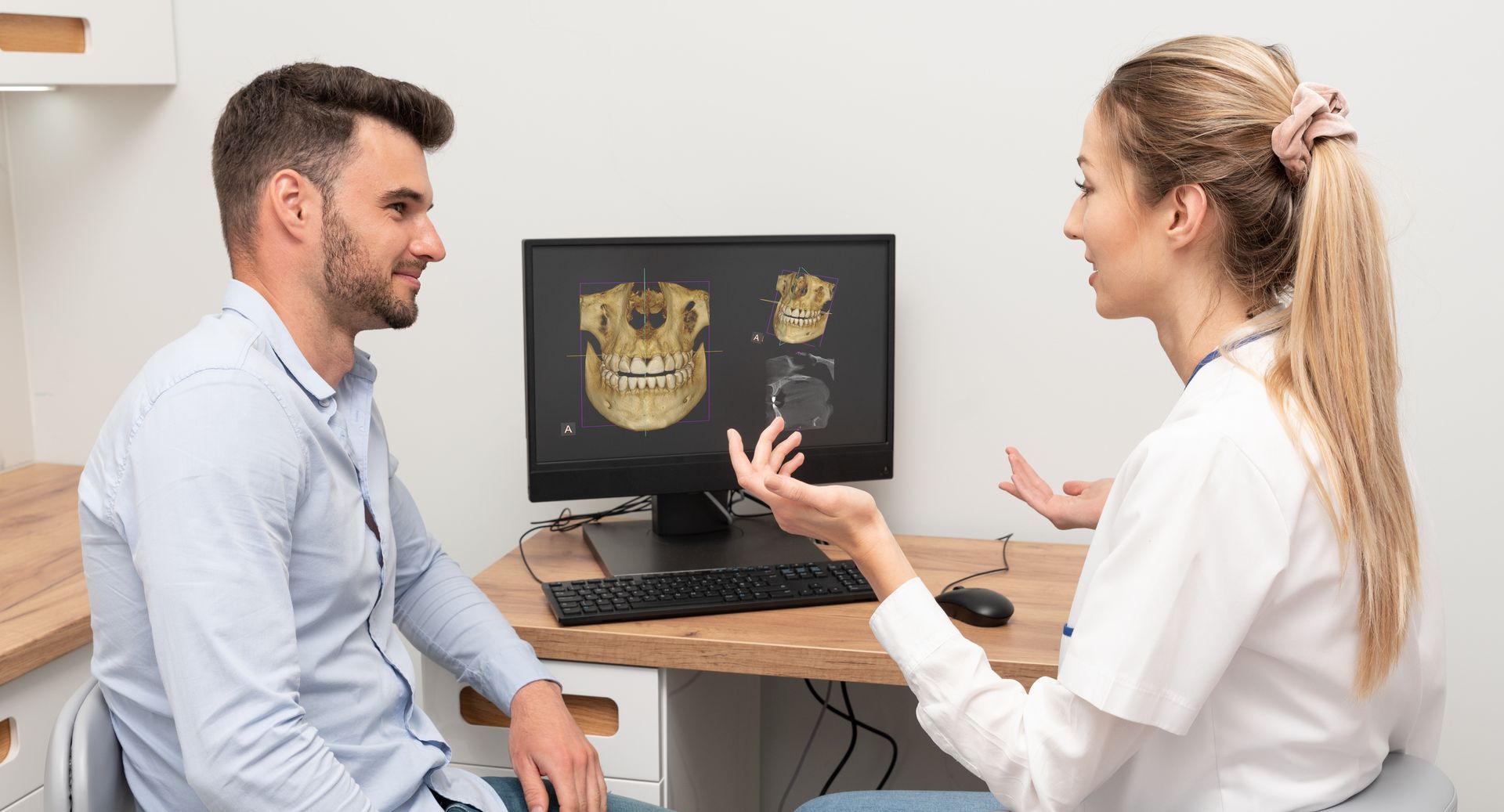Why are dental X-rays important in AI software?
Suzanne Cano • July 10, 2023
There are several reasons why dental x-rays play a crucial and critical part in AI software:
- Early Detection Disease: AI powered dental x-ray analysis can help in early detection of dental diseases. Comparing dental x-rays can help aid in with historical data, the algorithms can identify changes over time alerting dentists to any early issues developing before it becomes severe. Early detection can increase more effective treatments reducing the risk of complications and overall patient improvement.
- Diagnosis and Treatment Planning: Dental x-rays can support and provide information about teeth, gums and bone related structures not visible to the naked eye. AI software aids in analyzing the images to allow detection such as cavities, bone loss, impacted teeth, gum disease and certain abnormalities. Dental professionals can receive automated assistance in diagnosing and appropriate treatments through AI algorithms.
- Improved Accuracy and Efficiency: AI software can analyze dental x-rays faster with a higher accuracy than human observers. Leveraging machine learning through the algorithms the software can be trained on vast amounts of dental images to indicate various dental conditions leading to improved patient outcome.
- Supported Decisions: By analyzing dental x-rays the AI software can provide additional information suggested based on established guidelines and best practices. Dentists can use the information to validate the patient's diagnosis, consider other alternative treatment options leading to more informed decision making.
- Workflow Optimization: Integrating AI software into dental practices can help streamline office workflows and help in time saving for both the patients and dental professionals. Automated analysis of dental x-rays can increase the diagnostic process allowing dentists to focus more on patient care. The systems can organize and categorize dental x-ray images making them accessible for future reference comparisons.
AI software can assist in dental diagnosis, treatment planning and aiding in proper decision making but it's important to note that it should not replace the expertise and qualified judgment of dental professionals. The software should be a tool to augment and support the dental professional clinical skills.
Related Posts

Dental X-ray positioning is a very important and crucial part of obtaining diagnostic quality images of patients' teeth and the surrounding supporting anatomical structures. Proper placing of the x-ray sensor, phosphor plate of film in the mouth including proper alignment of the x-ray machine. Included are some key important reasons why x-ray alignment is important: Patient Safety - Proper alignment is essential for patient safety during x-ray taking. By proper mouthpiece positioning it helps prevent discomfort or injury to the soft tissues of the mouth. Accurate alignment reduces risk of unnecessary re-takes and less exposure to radiation creating an overall safer environment for patient and staff safety. Better Treatment Planning - Dental x-rays are extremely important providing information that helps dentists and treatment coordinators determine the best clinical outcome for various treatments. Monitoring - Regular x-rays can help dentists monitor progress such as orthodontic treatments, caries, bone loss, implant placing,root canals and aiding in for comparisons of consistent changes and effectiveness of treatments. Diagnostic quality images - Proper alignment of the dental x-ray machine shows the teeth and the surrounding structures from proper angles and its perspective allows the dentist to diagnose and identify certain conditions. Minimizing Unnecessary Radiation Exposure - Correct x-ray alignment minimizes radiation exposure for patients and staff members. Making the patient experience overall less cumbersome. Dental radiography is an important aspect of dentistry. It allows dentists to obtain diagnostic quality images, proper treatment planning and at the same time monitor the patients progress. Minimizing radiation and less re-takes would make the patient/staff experience less cumbersome, and ensure safety.

Dental x-ray manual positioners are devices used in the dental industry. The purpose for positioners is to help the end-user position the x-ray films, sensor or phosphor plates in the patient's mouth. They are intended and designed to help improve the quality of workflows and proper techniques of dental x-ray taking. Rinn Holders are popular manual positioners that were designed and invented by Dr. John A. Rinn who commercialized the devices around the 1940’s. There have been several other designs over the years offering a range of options for various dental imaging workflows and techniques for patients. There several recommended types of dental manual aligners including: Endodontic Rinns - Designed specifically for endo procedures. The design was developed to capture root canal procedures that are usually confined to smaller areas of the teeth to capture the apex of the tooth. Bitewings Rinn holders - Bite-wing x-rays are used to capture images of the upper and lower teeth in occlusion. Most offices require 2 or 4 images every 6 months or yearly.The holders have wing-like extensions to help the end-user position the sensor in the patient's mouth, the patient bites down on the wings or tabs if you will to establish bite occlusion. Universal Rinns - The holders are designed to accommodate different size holders for different size digital dental sensors, phosphor plates or film, the device is designed to secure the mouth capturing device in place. Pediatric Rinns - The pediatric holder is designed for smaller mouths for children to comfortably accommodate proper positioning of the mouth capturing devices such as digital sensors or phosphor plates, films. Rinn holders are an essential tool for dentistry to help capture quality diagnostic dental x-rays while decreasing patient anxiety or discomfort. The devices have contributed in more effective ways for proper positioning, reducing retakes and minimizing radiation.


